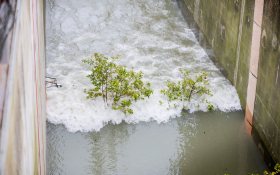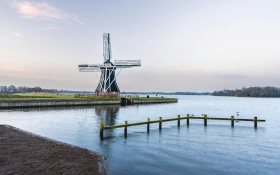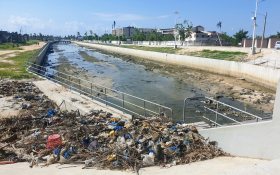As the Mississippi floods, follow the Dutch model
This opinion was originally published on the website of Washington Post, May 27th, 2011
source: http://www.washingtonpost.com/opinions
(read the interesting comments!)
By Renée Jones-Bos, Netherlands’ ambassador to the United States
Nature can be a ruthless teacher. Whether you live along the Mississippi River or in the Dutch delta, water is at once your best friend and your worst enemy.
When snow falls in Montana, or rain in western New York, it cascades through America’s heartland and along the Mississippi River system that drains two-fifths of the U.S. landmass. Similarly, a snowflake falling in Switzerland or a raindrop falling in northern France follows a familiar course to the Netherlands. The Mississippi River deltaic plain and the Rhine-Maas delta are the river systems’ valves.
These are wonderful, and dangerous, places to live, with job-producing harbors and wetlands’ unique biodiversity. But they also carry the risk of destructive floods that can cause tens of billions of dollars in damage.
Sixty percent of the Netherlands is at or below sea level; two-thirds of its people live in flood-prone areas; and 70 percent of Dutch gross domestic product is produced in areas under threat of water. The cadence of Dutch history is marked by floods and the response to them.
For me, as ambassador of the Netherlands, this year’s Mississippi flooding is a reminder of 1993 and 1995, when our rivers swelled to unprecedented levels. Large tracts of farmland were inundated; 250,000 people were evacuated. Direct flood damages exceeded $300 million, or 0.5 percent of Dutch GDP.
Our pat response to previous floods was much like those in the United States: Build the dikes higher, constrain the rivers more tightly, master the landscape. But something changed in the Netherlands in the late 1990s. More homes and businesses than ever had been built directly “behind the dikes,” in subsiding land. Climate change began to produce wetter winters, leading to repeated, dangerous river crests. Combined with the old Dutch adage that “there are two types of levees: those that have failed, and those that will,” those factors made us realize that something else needed to change.
Room for the River was born.
This project, implementation of which started in 2006, restores the river’s natural flood plain in places where it is least harmful in order to protect those areas that need to be defended. By 2015, through a series of 35 projects costing $3 billion, we will have lowered and broadened our flood plain and created river diversions and temporary water storage areas. We will restore marshy riverine landscapes to serve once again as natural “water storage” sponges and provide biodiversity and aesthetic and recreational values.
Complementing Room for the River are two corollary policies: “Retain, Store, Drain” and “Living With Water.” They encourage neighborhoods to retain water where it falls, using cisterns, green roofs and floodable parks. Living With Water demands that urban planners and water managers create communities wherein water is a cherished asset and not something to fear and keep out of sight.
These efforts have not come without controversy. The Netherlands is the world’s third-most-densely populated country. Intensive land use is common. Forgoing hard-won reclaimed land is politically difficult. But the disastrous floods of the ’90s provided fertile political ground to start a process involving all stakeholders: citizens, businesses and local governments. The 35 Room for the River projects were developed with the input of all of them.
The Mississippi River and its tributaries form a river basin much larger and more powerful than the rivers coursing through the Netherlands. Land-use patterns in the Mississippi basin are far more diverse. But after the disastrous floods of 1927, the prescient Maj. Gen. Edgar Jadwin of the Army Corps of Engineers said: “Make room for the river.” His call was echoed after the 1993 floods.
We believe that Room for the River has brought us safety and increased resiliency to climate change. We have a stronger ecosystem and more community amenity. We have fewer costs in upfront expenditures and post-disaster repairs. We know what it feels like to see homes and livelihoods swept away by the flow of unyielding water. That’s why since Hurricane Katrina, we have worked closely with those living in and managing the Mississippi Delta. Our sympathy goes out to the people there. And again, we stand ready to share our experience with those blessed and cursed by the mighty Mississippi.




